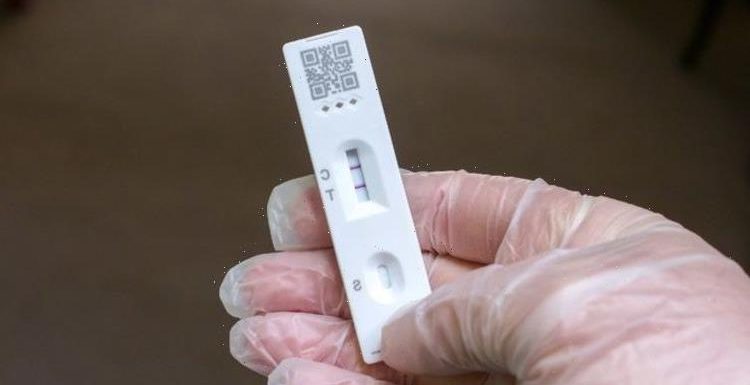
GB News panelists discuss future of lateral flow testing
We use your sign-up to provide content in ways you’ve consented to and to improve our understanding of you. This may include adverts from us and 3rd parties based on our understanding. You can unsubscribe at any time. More info
While lateral flow, or antigen tests, have been widely used to test for Covid infections in schools in the UK, the accuracy of the tests among adults has proven to be variable. But until now, how effective they are at testing for COVID-19 in children was unknown. And the results do not seem promising. They showed that lateral flow tests perform below minimum standards set out by health organisations around the world when used on children.
The findings were published in the BMJ Evidence-Based Medicine.
Dr Naomi Fujita-Rohwerder at the Institute for Quality and Efficiency in Health Care (IQWiG) said: “Taking into account test-specific pooled results, no test included in this review fully satisfied the minimum performance requirements as recommended by WHO, the US Food and Drug Administration or the Medicines and Healthcare products Regulatory Agency (MHRA) in the UK.
“This may affect the planned purpose of the broad implementation of testing programmes.”
The researchers searched through databases for studies published between 2020 and May 2021 which compared the accuracy of lateral flow and swab PCR Covid tests.
They found 17 studies that involved 6355 children and eight different antigen tests from six different brands.


Samples were collected from the throat and nose in 11 of the tests.
But in the others, only nose samples were taken.
To determine how well the tests performed at identifying a positive Covid infection or a negative result, the data was pooled in a process called diagnostic sensitivity or specificity.
The tests’ ability to pick out the children who do not have Covid was 99 percent accurate.
But only 64 percent of positive cases were picked up by the tests.
The researchers then assessed separate test results from children with Covid symptoms and children without them.

But for those with no symptoms, the tests only managed to identify 56 percent of positive cases.
Dr Fujita-Rohwerder said: “These observed differences in test performance between children with and without symptoms show that sensitivity and specificity are not inherent test characteristics.”
But most of the studies reviewed by the researchers were limited.
While eight different lateral flow tests were involved, there are more than 500 on the market.
Dr Fujita-Rohwerder said: “Sensitivity estimates of antigen tests varied broadly among studies and were substantially lower than reported by manufacturers, although the intended use of most tests is limited to people with symptoms, so performance data reported by manufacturers usually refer only to those with symptoms.
DON’T MISS
Scholz cripples to Putin’s pressure and fails to sanction Russia [REPORT]
Scientists discover new approach to beat antibiotic-resistant bacteria [INSIGHT]
Egypt news: ‘Strange’ spots discovered in Tutankhamun’s tomb explained [REVEAL]


“Less variation and only minor discrepancies to performance claims by manufacturers were observed for specificity estimates across studies.”
Lateral flow tests have been rolled-out to as well as PCR tests, which are deemed more effective.
Dr Fujita-Rohwerder said: “Nevertheless they come at the price of lower diagnostic accuracy, most notably a lower diagnostic sensitivity, which increases the risk of missing cases, including those with pre-symptomatic infection who have yet to enter the most infectious period.
“Whether this can be compensated for with frequent testing remains a moot point.”
This comes after the Government said lateral flow tests will not always be free for everyone after reports they might be phased out emerged.
Earlier this month, The Times reported that a “new strategy of living with Covid” for England is set to be announced “within weeks”.
The plan would reportedly mean free lateral flow tests would only be provided in high-risk environments like care homes, hospitals, and schools.
Source: Read Full Article